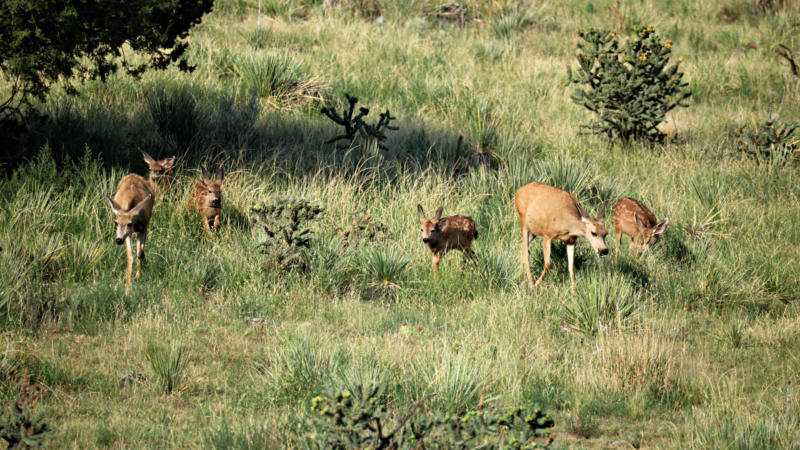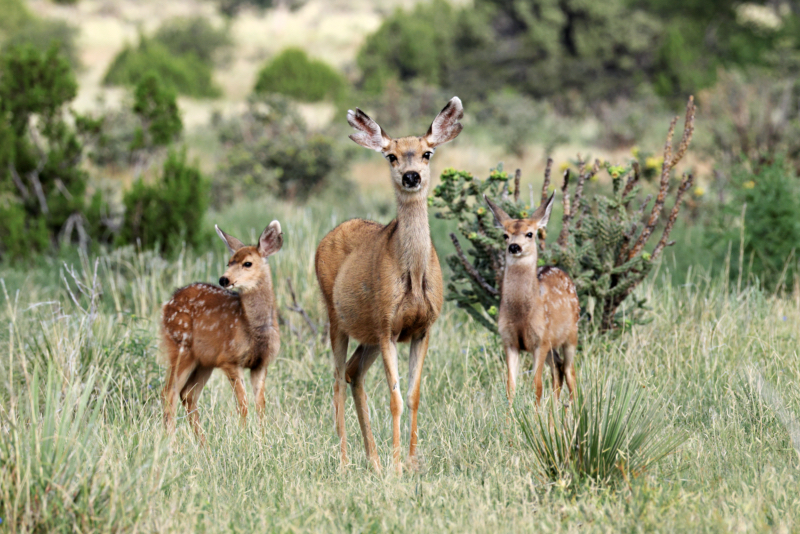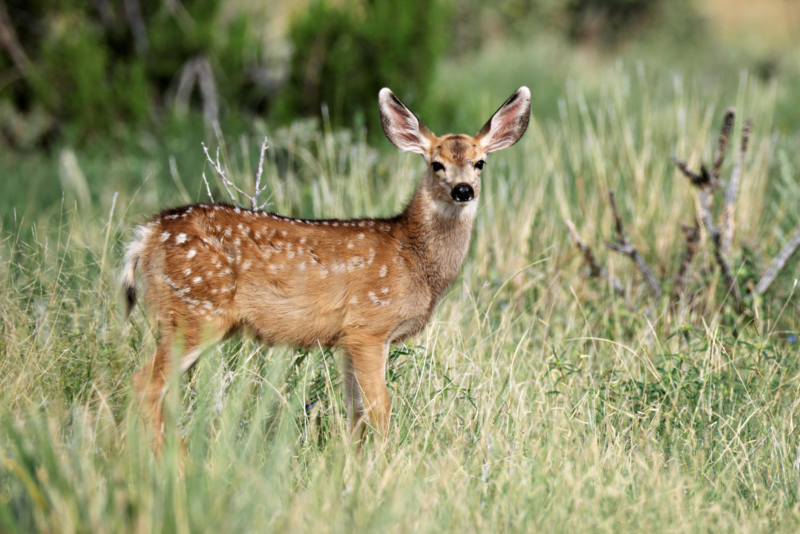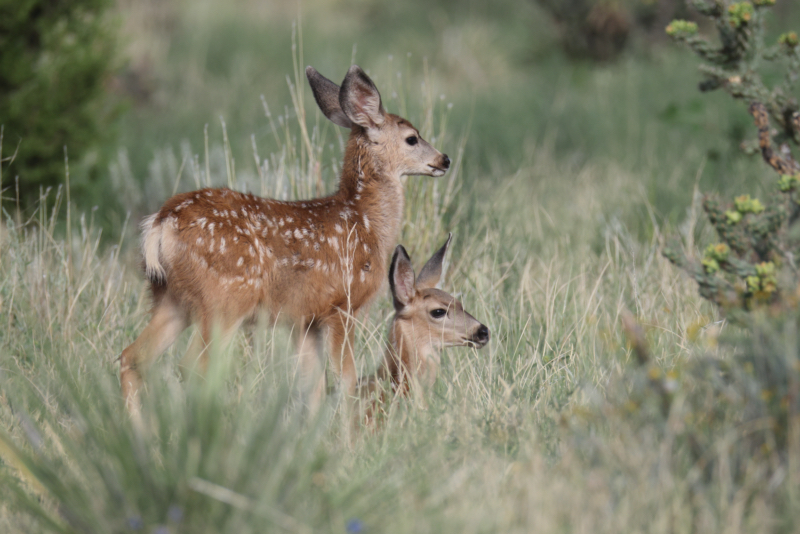Earlier today, I wrote about my journey to New Mexico to revisit Wedding Cake Butte, but I didn’t mention the reason for my delay in getting there. As I set out from Black Mesa State Park, I couldn’t resist making a quick detour to the Black Mesa Nature Preserve. This preserve is conveniently on the way to the New Mexico border, and since a fellow photographer mentioned seeing Bighorn Sheep near the area, I just had to take the chance of spotting and photographing some wildlife.
Unfortunately, the Bighorn Sheep eluded me this time. But, as I was heading back toward the state highway to continue my journey, I spotted something that made the detour worthwhile—two Mule Deer does, each with a set of twin fawns. I immediately pulled over and got my camera ready.
As luck would have it, instead of moving away, the deer began walking toward me, giving me a fantastic opportunity to capture some close-up shots. It was one of those perfect moments where everything aligns just right for a wildlife photographer.




The Fascinating World of Mule Deer Twins
Seeing two sets of twin fawns was a special treat, especially since we don’t have Mule Deer in Arkansas. It got me thinking about how common twins are among Mule Deer, so I did a little research.
Commonality of Twins: Among Mule Deer, twins are quite common, particularly for does in their prime breeding age who are in good health. Twin births help balance the generally low survival rates of fawns, making it a vital aspect of Mule Deer reproduction.
Survival Challenges: Despite twins being common, not all fawns survive to adulthood. Predation and environmental factors can drastically impact survival rates. Quality fawning habitat is essential to reduce these risks. In some areas, coyote predation alone accounts for a significant percentage of fawn deaths.
Watching and photographing these beautiful animals was a great way to start my day, and I’m glad I made the detour. It’s these unexpected moments that make wildlife photography so rewarding.

That Wedding Cake Butte is pretty, Nice photos of the deer and fawns and the two bucks in the back ground. Glad you spotted them.
Very good, Steve.